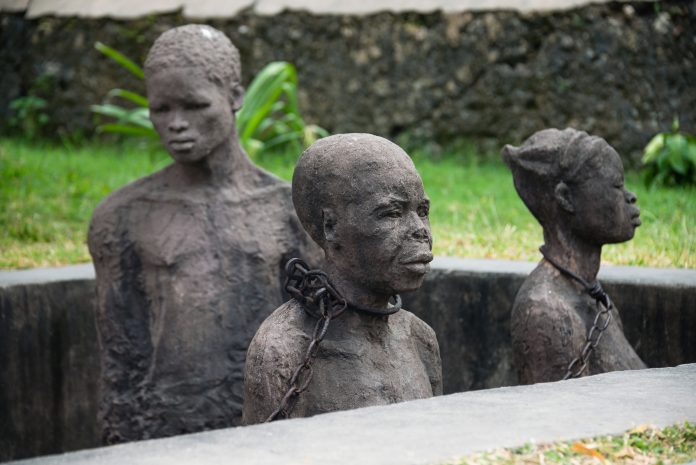Our history involves both hard facts and interpretation – the context in which the hard facts are presented. Interpretation inevitably is political and contested. How we see the past reflects how we live in the present and what we hope for in the future.
That’s what makes Florida Governor Ron DeSantis’ efforts to impose a new curriculum for public school instruction on African American history both revealing and repellant. A furor has grown about the new state guidelines for the history of slavery, which call for students to learn that “slaves developed skills which, in some instances, could be applied for their personal benefit.”
Depicting slavery as a jobs training program and a civilizing mission for the Africans who were enslaved has long been a central theme of those seeking to justify slavery. The ugly reality, of course, is that Africans were brought here in chains against their will and were bought and sold as chattel. They had no choice in what work they did or how they lived. The vast majority died in slavery. In the 1857 Dred Scott decision, Chief Justice Roger B. Taney ruled for the Supreme Court– in what is viewed as the worst decision in history – that enslaved people were not citizens of the United States and had no rights under the federal government.
It took a Civil War – the most violent conflict in American history – and the Thirteenth, Fourteenth, and Fifteenth Amendments – for slaves to gain freedom and even the possibility to develop skills “for their personal benefit” or to choose their mates, build their families, own property and more.
And the brief moment of freedom offered in the post-Civil War Reconstruction Era was met across the South with bands of white terrorists, systematic suppression of the right to vote, brutal use of the criminal justice system to turn Blacks into prison labor, and segregation of schools and public facilities. In Plessy v. Ferguson in 1896, the Supreme Court ruled that segregation was legal under the Constitution, depriving African Americans of equal justice under the law for 100 years after the Civil War.
During the century of segregation, the Civil War was taught as a “lost cause” of state’s rights. Slavery was often portrayed as a “benevolent institution.” The Reconstruction was depicted as a time of rapacious carpetbaggers and lecherous Black politicians preying on innocent whites throughout the South. It was only with the civil rights movement, courageous work by honest historians, and the Supreme Court overturning Plessy in Brown v. Board of Education that our schools began to teach something closer to reality.
DeSantis hand-picked the Florida board that approved the new curriculum instruction. It is part of the central theme of his presidential campaign: what he calls the “war on woke.” “Woke,” his spokesman reported, is the “belief that there are systemic injustices in American society and the need to address them.” DeSantis doesn’t believe in that. So he naturally turned his attention to purging the schools of books and purging the curriculum of unvarnished history. He touts his “Stop Woke Act,” which protects students from any instruction to “feel guilt, anguish or any other form of psychological distress” due to their race, color, sex, or national origin.
It is impossible to describe slavery, the horrors like the Greenwood Massacre ,…
Thank you for reading Jesse Jackson, article on scoopnewsusa.com. For more on “How we see the past reflects how we live in the present“, please subscribe to SCOOP USA Media. Print subscriptions are $75 and online subscriptions (Print, Digital, and VIZION) are $90. (52 weeks / 1 year).


